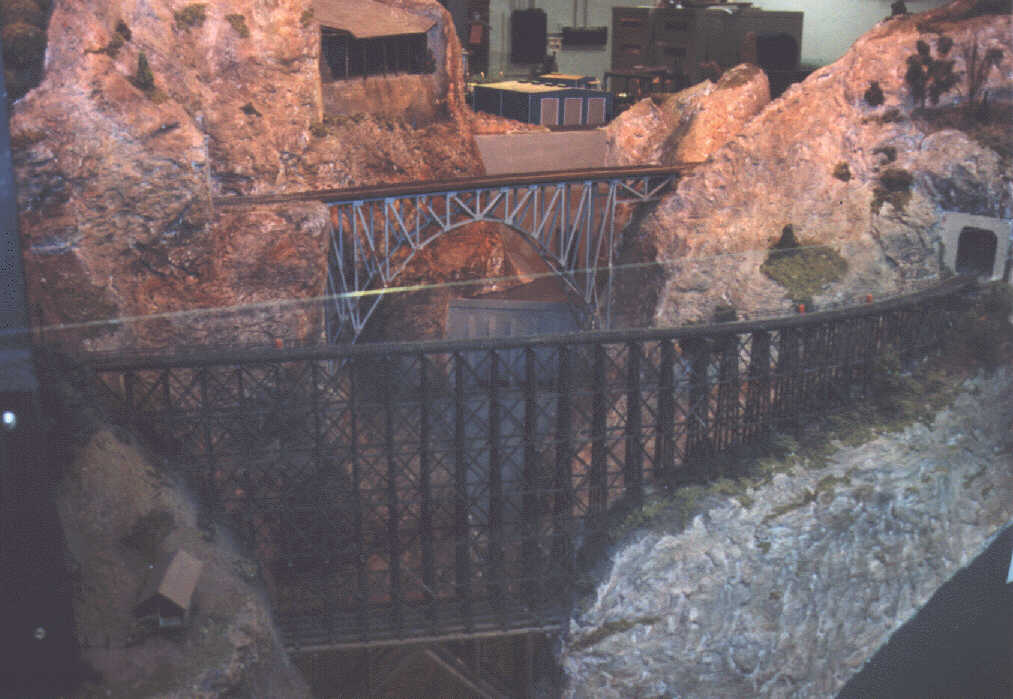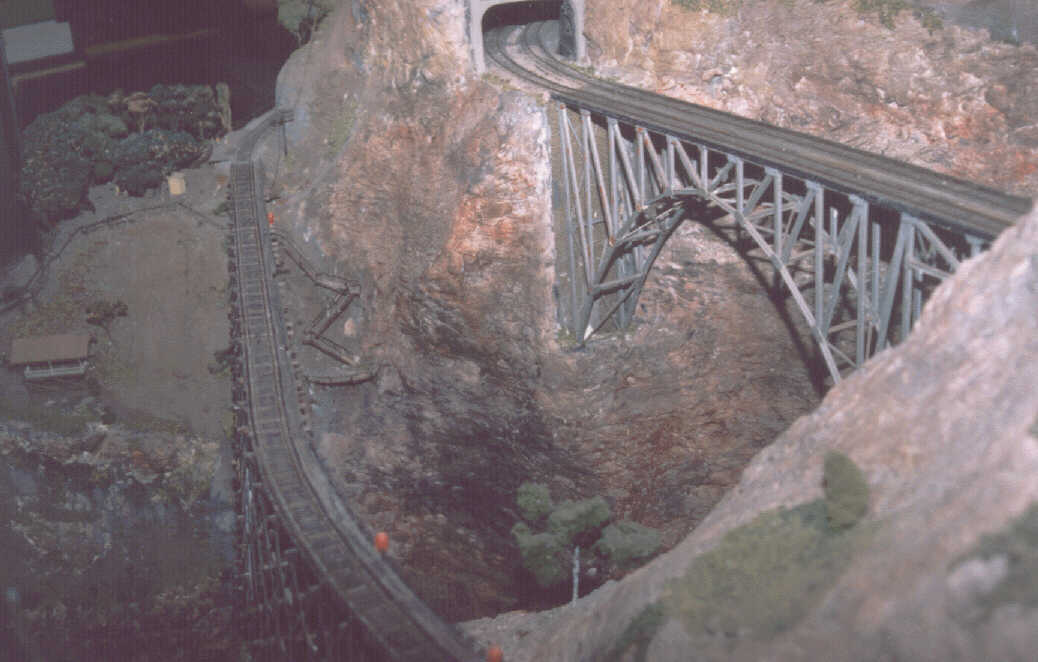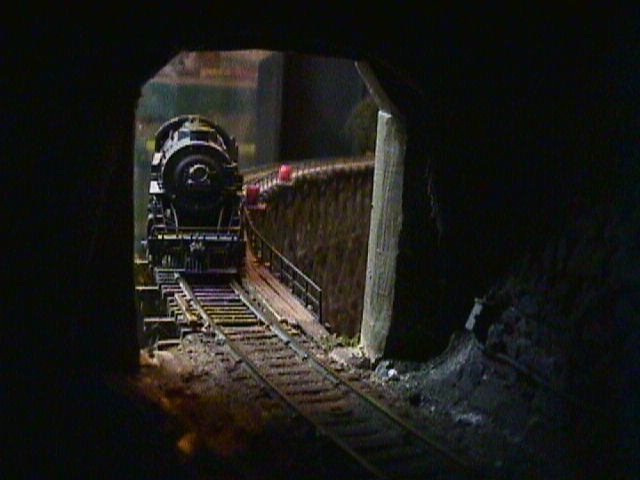|
|
|



The wooden Trestle bridge that crosses George’s’ Gorge was modeled by Foundation Member Ed Miller. This fantastic structure was built upside down then lowered into place. As fantastic as this model is the prototype is even more so. The prototype existed on the Cowlitz, Chehalis & Cascade Railway on the Cowlitz river.
From high in the watershed of Washington’s Mt. Rainier there begins a glacial stream. Fed by the melted remains of ice and snow, this stream has cut, chiseled and hacked its way down to find an eventual outlet to the Pacific Ocean at Longview. Yet its course to the surf is marked by deep canyons, some between 200 and 300 feet below the level of the surrounding land. This is the Cowlitz River and to push its rails east into the Douglas fir and red cedar stands around East Winston, the CC&C was obliged to hurdle the chasm.
But how? Too expensive a bridge would cancel out the advantages of the potential timber traffic; an inadequate structure would raise the question of safety and excessive maintenance costs. Plan after plan was drawn up, considered, and rejected; then the late C.N. Sweet, resident engineer for the Milwaukee Road in Seattle at the time, attacked the problem. And his solution was accepted.
To build Sweet’s bridge, big logs were selected from standing old-growth timber, free from conk, knots and limbs. The measured 120 feet in length with a 40 inch butts and 24 inch tops. Ten of them where placed in pairs across the river, 75 feet above the normal water level. The ends where set into concrete, the butt of one huge log set against the west bank, the butt of its mate facing the east side. Even this foundation got a foundation; a series of "A" frames of trusses under each pair of logs.
Atop all this was built the bridge itself with 20,000 board feet of lumber. It is 400 feet long and the rails are spiked 200 feet above the water line. Moreover, the railroad has a hill on both sides and the track across the bridge itself is curved and super elevated to compensate!
In December 1933 Sweet’s bridge met the supreme test, floodwater, and it passed with flying colors. The Cowlitz went on the rampage, the water level rose, and heavy debris was swept downstream. The "A" frames were swept away and as a result the deck sagged 8 inches downward yet the huge foundation logs held firm. In 1942 these massive timbers had decayed to the extent that replacement was necessary, yet so tricky was such a job that Sweet was called in to supervise. He placed low pony bents over each pair of logs sow they could be rolled out; two 50 ton stem cranes overhead (the super elevation of the track had to be taken out before the operators would tackle the job) lowered the new logs over the side. Yet this monumental affair was accomplished without delaying trains.
This page was Created By David Ramos on 2/13/97 and last updated on 05/30/00.